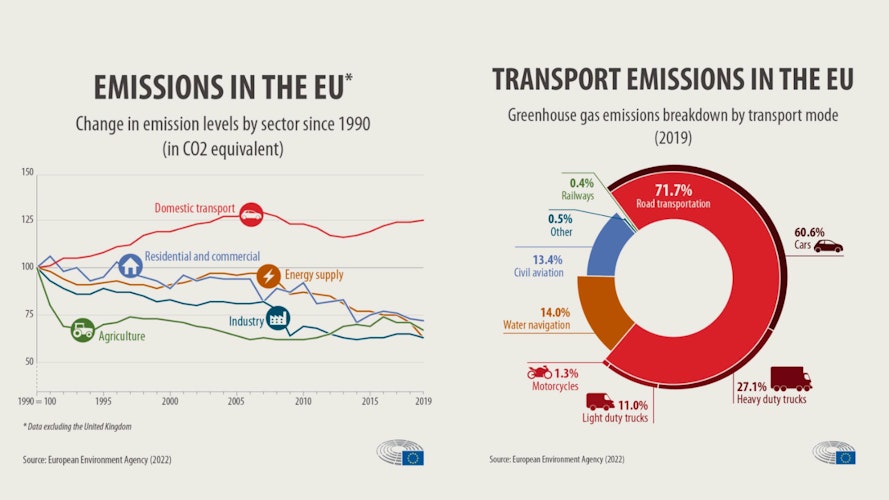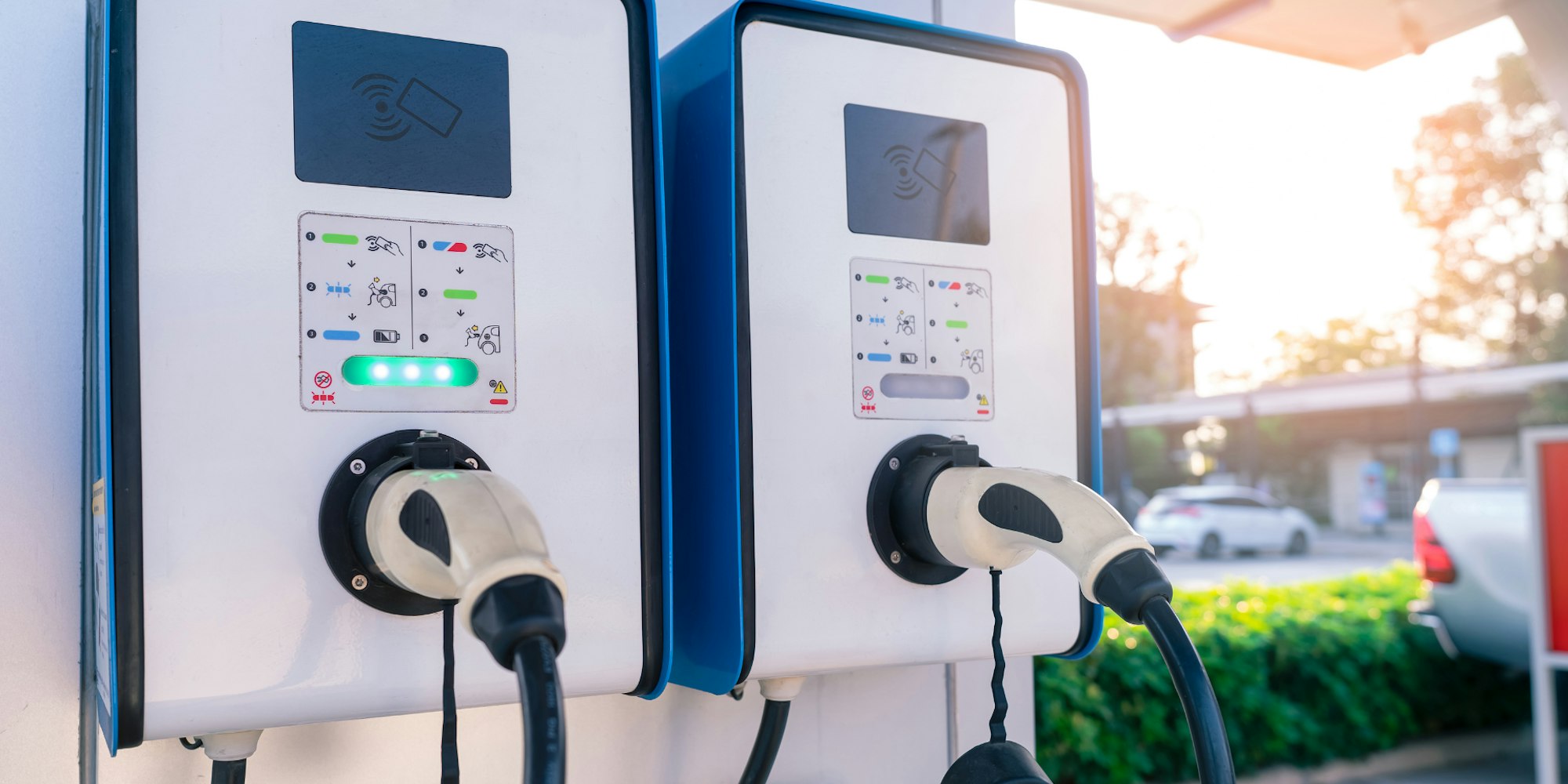Why EU and UK fleet managers should care about fleet sustainability and start reducing their emissions now
If you have been keeping up with the world in recent years, you are aware that sustainability is now a top priority for most businesses. The aftermath of the COVID pandemic and the increasing effects of climate change, including extreme weather events, have accelerated the transition to more sustainable business models. Businesses across all sectors, especially in the EU, have recognised the importance of understanding and reducing their CO2 emissions.
Sustainability and ESG (Environmental, Social, and Governance) strategies are not just about gaining a competitive advantage. With the rise of regulations, businesses are being compelled to move towards net-zero emissions, driven by both market dynamics and EU regulators.
The automotive and mobility industry plays a critical role in this race to reduce emissions and achieve net-zero carbon emissions. As the demand for vehicle production and advanced mobility increases, sustainable solutions and regulations become more essential than ever.
These regulations present multiple challenges, but they also offer opportunities for innovation and a cleaner, greener future.
How bad is the carbon footprint of the EU and UK fleets?
Well, to put it mildly, it's not looking good.
Historically, the automotive and fleet industries have been some of the most carbon-intensive sectors. Currently, transportation is responsible for approximately 23% of global energy-related CO₂ emissions. In the UK alone, the transport sector contributes to a quarter of the country's greenhouse gas emissions, according to official sources.
In the European Union, road transport alone accounts for 72% of all domestic and international transport greenhouse gas (GHG) emissions. Furthermore, tailpipe emissions from road vehicles make up nearly 75% of carbon emissions in the mobility sector. This translates to approximately 6 gigatons of CO₂ per year, representing around 15% of global CO₂ emissions. Since 1990, GHG emissions have increased by 21%.
Add the growth of e-commerce across Europe to the equation, and you'll see how detrimental traditional "emitting" fleets, which heavily rely on internal combustion engine vehicles, truly are.
Last-mile logistics contribute to 5% of supply chain emissions, which typically account for a staggering 90% of a company's total emissions. With the booming e-commerce industry, emissions are projected to increase by 32% in the top 100 cities alone. Furthermore, the demand for urban last-mile delivery is expected to grow by 78% by 2030, resulting in a 36% increase in delivery vehicles in the world's top 100 cities (source).
Fleets play a crucial role in global efforts to achieve net-zero targets. As consumer values shift and regulations tighten, companies in this sector will eventually need to replace fossil fuel-dependent vehicles with low-carbon alternatives like cargo bikes and electric vehicles (EVs).
However, only 1.4% of commercial fleet vehicles in Europe are electric. At the end of 2022, just 0.8% of light commercial vehicles (LCVs) and 0.1% of trucks operated by commercial fleets were classified as electric, according to the new fleet report from Charles River Associates (CRA).
What regulations are impacting fleets in the EU and UK?
Across the EU and UK, governments and regulatory bodies are implementing policies to promote the transition to low-carbon economies and reduce the use of fossil fuels across various sectors, particularly impacting fleets. Fleet managers across Europe need to consider multiple decisions, ranging from emission reporting regulations to the ban on fuel vehicles. These are likely to increase fleet managers appetite for low-emission vehicles such as electric vehicles and cargo bikes.
CO₂ targets and fuel bans
In the EU:
The "Fit for 55" package, approved in March 2023, aims to reduce road transport emissions by cutting emissions from light commercial vehicles by 50% by 2030.
All new vans (and cars) sold after 2035 will be required to be zero-emissions.
In the UK:
Despite the recent removal of the 2030 ban on the sale of new internal combustion engine (ICE) vans, transitioning away from them remains critical. London expanded the ultra-low emission zone in August 2023, and multiple cities across the UK are implementing similar low-emission zones as part of the government's Clean Air Strategy.
ESG and emissions disclosure regulations
The Corporate Sustainability Reporting Directive (CSRD) will be effective from the 2024 fiscal year. This new EU legislation requires large companies to publish reports on their environmental and social impact, including the disclosure of their CO2 emissions. The CSRD increases the number of companies required to report on sustainability to almost 50,000. This includes large companies and fleets meeting two of the following three condition:
€40 million in net turnover
€20 million in assets
250 or more employees
Non-EU companies with a turnover of above €150 million in the EU will also have to comply.
For now, it doesn’t apply to small companies, except for those with securities listed on regulated markets. But the European Commission has proposed developing separate standards that non-listed SMEs could voluntarily use and that would fit SMEs’ capabilities.
The UK’s Streamlined Energy and Carbon Reporting (SECR) policy requires organisations to share energy use and carbon emissions information in their annual reports. Fleet companies meeting two or more of the following criteria have to comply with it:
a turnover of £36 million or more
a balance sheet of £18 million or more
250 employees or more
This clearly shows that regulations are going towards greater disclosure requirements that will impact all industries and an increasing number of companies. Therefore, fleet companies without clear and meaningful sustainability metrics and KPIs in place need to take immediate action.
How fleet managers can get ready to reduce their emissions
Recent studies revealed that fleets using electric vehicles (EVs) have cut carbon emissions by more than 15 tonnes of CO2 per vehicle, per year in 2023. Fleets around the world are already starting to make the switch. Around a fifth of DHL's delivery fleet is now zero-emission vehicles, while Fedex has been using electric vehicles since 2010.
So if they can, you can too!
Step 1: Measure!
To improve something, you first need to understand it. That's why it is crucial to have a clear understanding of the amount of CO2 emitted by your fleet. Start by taking a simple approach to get a rough idea of your current emissions.
Avoid getting too detailed right from the beginning, as it may distract you from taking action and seeing initial results that can drive further, more complex improvements.
Papaya’s fleet emission calculator is a great starting point. Simply provide some basic information about your fleet, and our tool will automatically calculate your current emissions and provide suggestions on how you could reduce them by switching to electric vehicles.
Step 2: Optimise
Are you sure you use your fleets in the best way to reduce emissions? Optimising fleets to reduce emissions before replacing vehicles is both environmentally and financially beneficial. Here's what you can do:
Optimise your load: Did you know that the space inside vans is generally under-utilised? In fact 66% of vans circulating in London are less than half full. Ensure your vehicles are loaded optimally, avoiding both overloading or underutilising capacity.
Provide drivers with eco-driving training: This can significantly cut fuel consumption and emissions. Techniques such as smooth acceleration, reduced idling, and maintaining a steady speed enhance fuel efficiency.
Ensure regular vehicle maintenance: Well-maintained engines operate more efficiently, emitting fewer pollutants. Proper tire inflation and maintenance also contribute to reduced fuel consumption.
Optimise your route: This can help minimise unnecessary mileage, thereby lowering emissions and fuel costs. For example, the last-mile supply chain made possible by local fulfilment centres could lower last-mile emissions between 17 and 26% through 2025.
Use IoT & analytics: This will help monitor vehicle performance to identify opportunities for improving operations.
Implement a software solution to track your performance and emissions and gather insights to optimise and improve your fleet. Papaya’s Vehicle and Fleet management solutions can help you. From automating maintenance processes to providing you insights and gathering all your IoT data, you’ll get all your fleet operations in one place and be able to communicate with all your internal teams and external service providers on a single workflow.
By implementing these strategies, fleets can substantially reduce emissions and environmental impact without the need for a complete vehicle replacement, ultimately benefiting both the planet and their bottom line.
Step 3: Replace
You might not even need all these ICE vans after all. According to a study, approximately 51% of all motorized trips in European cities that involve the transport of goods could be shifted to bikes or cargo bikes. Cargo bikes can deliver more parcels per hour than the average van and produce 92% less greenhouse gas emissions per delivery.
To estimate what your electric fleet could look like and explore vehicle options based on your unique needs, use our fleet emission calculator and browse through our selection of cargobikes, ebikes, emopeds, and evans on the Papaya Marketplace.
Is it just about the regulations?
Regulations are not the only driver that should encourage fleet managers to switch to electric vehicles:
Cost Savings: Reducing emissions not only helps the environment but also saves money. By switching to sustainable and low-emission vehicles, fleet managers can lower fuel costs, reduce repair bills, and take advantage of financial incentives.
Reputation and Brand Image: Being environmentally conscious gives you a competitive edge and attracts customers who prioritize sustainability. By showcasing your commitment to reducing emissions, fleet managers can enhance their brand image and reputation.
Health Benefits: Transitioning to low-emission vehicles improves air quality, promotes better health for drivers, and creates a happier work environment. It reduces air pollution, lowers the risk of respiratory problems and cardiovascular diseases, and boosts employee satisfaction and productivity.
Conclusion
As the global economy transitions to a new reality where sustainability plays an important role, businesses in the mobility and fleet industries will need to rethink their operations. Finding sustainable, net-zero alternatives to traditional ICE vehicles and understanding and tracking real emissions will be key in the race to long-term emission reductions.



